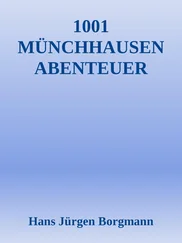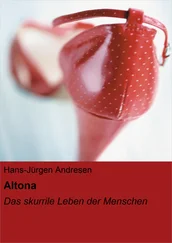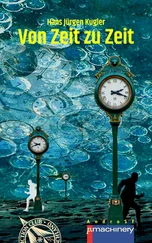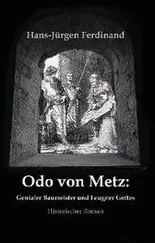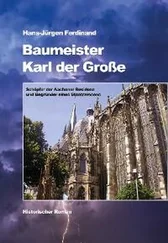Epidemiology
The typical patient with painful CMD is a woman of child-bearing age with pains in the muscles of mastication. Women seek professional assistance because of their symptoms at an overwhelmingly higher rate than men. The more specialized the facility, the higher the proportion of women patients. In university pain centers, the ratio of women to men can be as high as 9:1.
Individual Need for Treatment
The question of whether an individual needs treatment automatically follows from the preceding comments. Traditionally, the range of dysfunction has been widely interpreted in dentistry. In the past, anyone who did not function like an articulator performing symmetric, noise-free movements would have run the risk of being regarded by a dental practitioner as potentially dysfunctional. Fortunately, this view has changed considerably.
CMD treatment not required
Current thinking is that certain CMD symptoms do not usually require any special (additional) diagnostic investigation and do not need treatment when people are otherwise pain-free:
Clicking or popping noises in the TMJs. The most common cause of TMJ clicking or popping is an anterior position of the articular disc. Clicking or popping noises without other symptoms (pains) are also not an indication for further diagnostics or treatment in the field of orthopedics. Carrying out magnetic resonance imaging for TMJ clicking or popping can thus be viewed as an excessive use of diagnostic tools. If patients report joint pains as well as TMJ noises—if they have painful joint clicking—the pain symptoms, but not the noise, require a more thorough examination and (usually) need treatment. An exception is a very loud clicking or popping of the joints that is not tolerable for the patient and his/her social environment. In this case, the available treatment methods that are indicated need to be fully explored, bearing in mind their particular risk-benefit relationship.
Grating noises in the TMJs. Grating noises in the TMJs are generally a clinical sign of contact between two bone surfaces. However, grating without other symptoms (pain) is not an indication for treatment.
Deviation (corrected lateral deviation) of the mandible during mouth opening.
Differences in the extent of maximum laterotrusion to the left and right. These tend to be more the rule than the exception 14 and reflect the fluctuating asymmetry typical of mammals.
Sensitivity on palpation of jaw muscles and/or TMJs detected during a routine functional diagnostic examination. These areas are not painful during the course of the patient’s daily mandibular function.
Signs of osteoarthritis on radiographs (dental panoramic radiography).
All these symptoms, which used to be classified as dysfunctions, are today viewed as a variation from normality. This means the range of normal function—or “eufunction”—has been greatly expanded. Albert Gerber (Zurich) warned as early as 1964 that “not every TMJ that causes discomfort must eo ipso be diseased” and not all discomfort must be treated. 15
CMD treatment required
By contrast, further diagnostic investigation and treatment are advisable in certain clinical situations:
Painful symptoms in the area of the jaw muscles and/or TMJs. Pains reported by patients must always be taken seriously. As a general rule, pain-related information provided by patients must not be doubted in terms of its veracity. This is especially true of the maxillofacial area, since it is extremely unlikely that pains in this area will result in early retirement—unlike back pains, for example. Pains in the region of the jaw muscles or in one or both TMJs are the key symptom in more than 90% of dental patients with painful CMD—and not a reduced range of mandibular movement or TMJ noises. However, a large proportion of patients with myoarthropathic pains do not consult a clinician for treatment. Anxiety about their existing problems is an important factor in whether patients decide to have their symptoms investigated and, if necessary, get therapeutic assistance. Pains in the muscles of mastication and/or TMJs are accompanied by a distinct limitation of the range of mandibular movement in rare cases. Pain-induced repositioning of the mandible (relieving posture) can cause changes in the occlusion of the teeth (premature contacts), which patients may find very disturbing, especially in the case of acute malocclusion.
Reduced range of mandibular movement, which usually affects maximum mouth opening. Limitations of movement are noticeable to some extent on laterotrusion and protrusion of the mandible but far less frequently than during mouth opening. In patients with painful CMD, there are basically two reasons for limited movement of the condyles of the mandible:
1 Mechanical obstacle in one or both TMJs caused by anterior, medial, or lateral displacement of the articular disc or by adhesions in the joint.
2 Reflex adaptation of mandibular movement (“splinting effect”) resulting from pains in the area of the jaw muscles and/or TMJs; the wider the mouth is opened, the greater the intensity of the pain. Voluntary limitations of mandibular movement in terms of a relieving posture can be interpreted as an adaptive mechanism under reflex control that aims to relieve the existing pains and protect the affected anatomical structures.
There is a generally recognized threshold beyond which it is possible to talk of limited mouth opening (= sum of vertical overbite and maximum interincisal distance). The commonly quoted value of 40 mm (or 38 mm in women) is by no means generally accepted as the threshold between “limited” and “not limited.” Essentially, a certain tolerance should be applied to any threshold because the maximum mouth opening possible with identical rotation in the condyles is dependent on the length of the mandibular body. However, dental practitioners must carry out further diagnostic measures in the following cases:
Limitations of the range of mandibular movement reported by the patient
Continuous reduction of maximum mouth opening lasting a period of a few days, weeks, or months
Measured mouth opening of less than 35 mm (clinical rule of thumb)
In these cases, a careful diagnostic investigation (including imaging techniques) is needed to exclude causes other than CMD, especially tumors. A tumor should be suspected until it has been disproved with absolute certainty. It should also be borne in mind that non-neoplastic changes, such as scleroderma and undetected mandibular fractures, can cause limited mouth opening.
It is primarily the patient, not the dentist, who gauges whether diagnosis and treatment are required in a case of painful CMD—unlike with caries or periodontal diseases, for which the dental practitioner usually decides on the need for treatment. This is why screening tests, which aim to identify and treat subclinical, prepathologic dysfunctions, should be viewed as unjustified excessive diagnostics in people who are subjectively symptom-free. This does not mean to detract from the value of carrying out (simple) functional diagnostics prior to major therapeutic interventions for prosthodontics, oral surgery, or orthodontics.
During and/or after examination, the symptoms that have been observed or are troubling the patient must be explained in a one-to-one conversation, based on up-to-date, reliable information that the patient will understand. This applies as well to symptoms that do not require treatment. The patient should be told about the probable cause of the symptoms and whether or not further diagnostic tests and treatment will be required. A useful approach is to draw an analogy for the patient between muscles of mastication and back muscles, and between TMJs and the lumbar spine. In cases of normal variation, patients should also be told what diagnostic and therapeutic measures are not required (according to the most current information) but which might be proposed and carried out elsewhere. Armed with this knowledge, they will be able to argue against such proposals.
Читать дальше


